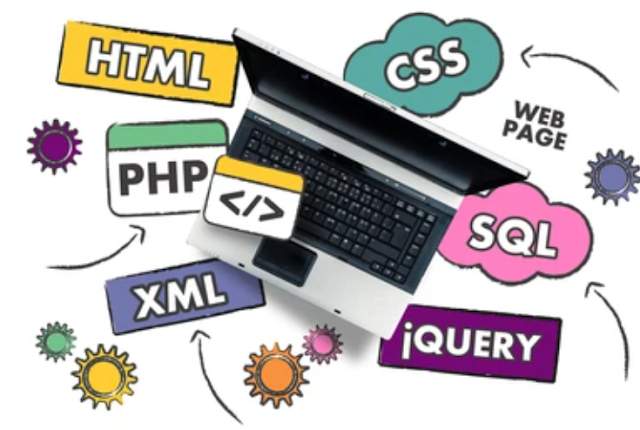Creating Engaging and Dynamic Web Pages with jQuery
jQuery is a popular JavaScript library that simplifies the process of manipulating HTML elements, handling events, and creating dynamic web pages. With its concise syntax and extensive range of features, jQuery empowers web developers to enhance user experiences, add interactivity, and create engaging websites. This article explores the power of jQuery in creating dynamic web pages and provides insights into its key features and capabilities.
Understanding jQuery:
jQuery is a fast, lightweight, and feature-rich JavaScript library that simplifies DOM manipulation, event handling, and animation. It provides a cross-browser compatible abstraction over JavaScript, allowing developers to write concise and efficient code. jQuery simplifies complex tasks and enhances productivity by offering a wide range of built-in functions and methods.
DOM Manipulation:
One of jQuery's primary features is its ability to manipulate HTML elements within the Document Object Model (DOM) efficiently. With jQuery selectors, you can easily target and select specific elements on a web page. jQuery provides a range of methods to modify element attributes, manipulate the content and structure of HTML elements, and dynamically update web page content without requiring a page refresh.
Event Handling:
jQuery simplifies event handling by providing a unified and intuitive API. You can easily attach event handlers to HTML elements, respond to user interactions such as clicks, mouse movements, or form submissions, and execute specific actions accordingly. Event delegation allows you to handle events efficiently for dynamically added or removed elements.
Animation and Effects:
jQuery offers a rich set of animation and effects capabilities to create visually appealing and engaging web pages. You can apply animations to HTML elements, define transitions, create custom animations, and control timing and easing functions. jQuery's animation functions, such as fadeIn, fadeOut, slideUp, and slideDown, allow you to create smooth and dynamic effects to enhance user experience.
AJAX and Asynchronous Operations:
jQuery simplifies the implementation of AJAX (Asynchronous JavaScript and XML) requests, enabling you to fetch and update data from servers without reloading the entire web page. AJAX capabilities in jQuery include making HTTP requests, handling responses, and updating page content dynamically. With AJAX, you can build dynamic web applications that fetch and display real-time data, provide live search suggestions, or enable smooth data updates.
UI Widgets and Plugins:
jQuery offers a wide range of user interface (UI) widgets and plugins that extend its functionality and enhance user experiences. These widgets, such as date pickers, sliders, accordions, modals, and tooltips, provide ready-to-use interactive components that can be easily integrated into web pages. jQuery UI and other plugin libraries provide a vast collection of UI elements to simplify complex interactions and improve the visual appeal of web pages.
DOM Traversal and Manipulation:
jQuery's powerful DOM traversal and manipulation capabilities allow you to navigate and modify the structure of HTML documents efficiently. You can traverse the DOM tree, access parent and child elements, find specific elements based on their attributes or relationships, and perform advanced manipulation tasks. This simplifies tasks like filtering elements, modifying CSS classes, adding or removing elements, and creating dynamic content.
Cross-Browser Compatibility:
jQuery abstracts many browser-specific quirks and provides a consistent API that works across different browsers. This helps ensure that your web pages function correctly and consistently across various platforms and devices. jQuery handles browser inconsistencies and provides a unified development experience, saving time and effort in cross-browser testing and compatibility fixes.
Plugin Ecosystem:
jQuery has a vast ecosystem of plugins and extensions developed by the community. These plugins extend jQuery's functionality, allowing developers to add specific features or integrate with third-party libraries and APIs. The plugin ecosystem provides solutions for various needs, such as image sliders, form validation, data visualization, social media integration, and much more.
Performance and Optimization:
While jQuery simplifies web development, it's important to use it judiciously and consider performance optimization. Minimizing unnecessary DOM manipulations, caching jQuery selections, and optimizing animations can significantly improve performance. Additionally, consider leveraging jQuery's modular approach to load only the necessary components, reducing page weight and improving load times.
Conclusion:
jQuery is a powerful tool that simplifies the process of creating engaging and dynamic web pages. With its extensive range of features, including DOM manipulation, event handling, animation, AJAX, and UI widgets, jQuery empowers developers to enhance user experiences and add interactivity to their websites. By leveraging jQuery's capabilities, you can create visually appealing effects, streamline user interactions, and build dynamic web applications. However, it's essential to use jQuery judiciously, consider performance optimization, and stay updated with best practices to ensure optimal results. Embrace jQuery as a valuable asset in your web development toolkit and unlock the power to create engaging and interactive web pages.












